Bodenbiogeochemie
Herzlich willkommen bei Bodenbiogeochemie
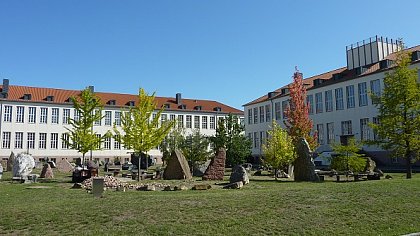
Bodenbiogeochemie, Institut für Agrar- und Ernährungswissenschaften (Foto: Bruno Glaser)
Bodenbiogeochemie, Institut für Agrar- und Ernährungswissenschaften (Foto: Bruno Glaser)
Professur für Bodenbiogeochemie
Die Professur für Bodenbiogeochemie unter der Leitung von Prof. Dr. Bruno Glaser beschäftigt sich mit der Rolle der Pflanzenkohle und deren Umweltaspekten im Kontext eines nachhaltigen Managements natürlicher Ressourcen.
Zu den weiteren Forschungsschwerpunkten zählen die Identifizierung und Quantifizierung von Bodenprozessen, die Methodenentwicklung, die Nutzung stabiler Isotope sowie nicht-destruktive und nicht-invasive Analysemethoden.
Darüber hinaus befasst sich die Arbeitsgruppe mit Fragen der Besiedlungsgeschichte (u. a. Terra Preta, Raised Fields) und der Paläoökologie.
[ mehr ... ]
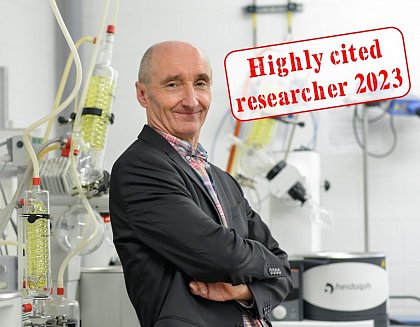
highly cited researcher Prof. Bruno Glaser, Foto: Uni Halle / Markus Scholz
highly cited researcher Prof. Bruno Glaser, Foto: Uni Halle / Markus Scholz
Kontakt
Sekretariat
Raum 3.3.31
Von-Seckendorff-Platz 3
06120 Halle (Saale)
Link zur Anfahrt
Telefon: +49-(0)345-5522531
Telefax: +49-(0)345-5527116
Postanschrift:
Martin-Luther-Universität Halle-Wittenberg
Naturwissenschaftliche Fakultät III
Institut für Agrar- und Ernährungswissenschaften
Professur für Bodenbiogeochemie
06120 Halle (Saale)


TwinSubDyn Summer School in Novi Sad
Junge Wissenschaftler:innen konnten in der ersten Juniwoche 2025 auf der TwinSubDyn Summer School in Novi Sad, Serbien, den aktuellen Wissensstand zu organischen Zusatzstoffen erlernen, ihre Forschung dazu vorstellen und ihre praktischen Fähigkeiten zum wissenschaftlichen Arbeiten erweitern.
[ mehr ... ]

Workshop zur „Schamanin“ von Bad Dürrenberg
Bruno Glaser präsentierte biogeochemische Erkenntnisse zur Grabstätte der „Schamanin“ von Bad Dürrenberg während eines Workshops im Landesmuseum für Vorgeschichte im Mai 2025, an welchem Expert:innen von über 30 verschiedener Fachrichtungen ihre Ergebnisse vorstellten.
[ mehr ... ]

13.–14.05.25 Exkursion Gartow und Gorleben
Mitglieder der Arbeitsgruppe und Studierende entnahmen Proben bis in den Unterboden eines Langzeitfeldversuchs in Niedersachsen im May 2025, um vertikale Transportprozesse von Pflanzenkohle zu untersuchen.
[ mehr ... ]

MyDiv Geländearbeit in Bad Lauchstädt
Der nächste Abschnitt des MyDiv-Projekts zu Mykorrhiza-Pilzen wurde zusammen mit den Arbeitsgruppen aus Jena und Leizpig auf dem Langzeitversuch in Bad Lauchstädt im Mai 2025 durchgeführt.
[ mehr ... ]

27.04.–02.05.25 EGU25 Wien
Arthur Groß und Ryan Pearson stellten ihre aktuelle Forschung zum Einfluss von Pflanzenkohle auf die Physikochemie von Böden, sowie die Transportprozesse von Pflanzenkohle im Boden auf der EGU25 in Wien im April 2025 vor.
[ mehr ... ]

Energieeffizienz in der Solidarischen Landwirtschaft (SoLaWi) im Vergleich zur konventionellen Gemüseproduktion
Die Solidarische Landwirtschaft (SoLaWi) fördert Ernährungssicherheit und Nachhaltigkeit. In einer Studie, die aus einer Kooperation zwischen UFZ und MLU hervorging konnte gezeigt werden, dass SoLaWi-Betriebe bei der Energienutzung effizienter sind, z. B. durch geringeren Einsatz fossiler Brennstoffe und höheren Anteil an eigener Photovoltaik. Trotz der geringeren Erträge verglichen zur konventionellen Produktion, fördern SoLaWi-Betriebe die Biodiversität und reduzieren Lebensmittelverluste - damit ist das Konzept SoLaWi ein vielversprechender Ansatz für eine nachhaltige Ernährungswirtschaft.
[ mehr ... ]

Terra Preta: Schwarze Erde – grünes Klima?
Sie ist ein Tausend Jahre altes Zufallsprodukt: Terra Preta. Die schwarze, nährstoffreiche Erde entstand im Amazonasgebiet, als indigene Völker begannen, ihren Müll im Boden zu vergraben. Das Geheimnis der Terra Preta ist die darin enthaltende Pflanzenkohle – der im Kampf gegen die Klimakrise eine neue Bedeutung zukommt.
[ mehr ... ]
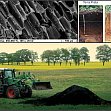
Die Wirtschaftsreportage
Die Wirtschaftsreportage: "Terra Preta": Wirklich ein Wundermittel gegen den Klimawandel?
[ mehr ... ]

Gesunde Böden sind überlebenswichtig
Mehrtägige Tagung in Halle „Böden - divers & multifunktional“ zeigt das breite Spektrum der Bodenforschung.
[ mehr ... ]
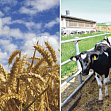
Milchbetriebe: Umstellung auf Bio verbessert Klimabilanz
Stellt ein Milchbetrieb seine Produktion von konventionell auf ökologisch um, kann das seinen Klimafußabdruck um bis zu neun Prozent reduzieren. Das zeigt eine neue Studie unter Leitung der Arbeitsgruppe Bodenbiogeochemie (MLU) und des Leibniz-Instituts für Agrarentwicklung in Transformationsökonomien (IAMO), für die ein Milchbetrieb über zwei Jahre bei diesem Prozess begleitet wurde. Trotz des Mehraufwands blieben auch die Erträge auf hohem Niveau, wie das Team im Fachjournal "Agronomy for Sustainable Development" schreibt.
[ mehr ... ]
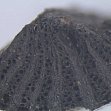
Aktiver Klimaschutz durch Einsatz von Pflanzenkohle
Der Einsatz von Pflanzenkohle für einen aktiven Klimaschutz rückt immer mehr ins Zentrum der Öffentlichkeit. Doch neben der Fähigkeit langfristig CO2 und andere Treibhausgase zu speichern, hat Pflanzenkohle viele weitere Vorteile für Ackerbau und in der Tierernährung. Für NDR spricht Prof. Bruno Glaser über den Einsatz von Pflanzenkohle im Sinne des Klimaschutz, sowie über die vielen agronomischen Vorteile.
[ mehr ... ]
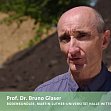
Terra preta: Schwarze Wunder-Erde aus Franken
Etliche Gartenliebhaber schwören auf "terra preta", schwarze Erde, die besonders fruchtbar ist. Sie wurde Ende des 19. Jahrhunderts am Amazonas entdeckt. Sie entstand dort vor 2000 Jahren aus Abfällen von Menschen. Aaron Saßmannshausen aus Oberfranken stellt selbst "terra preta" her - im großen Stil. Die Basis: Pferdemist, pflanzliche Abfälle und - besonders wichtig: Holzkohle.
[ mehr ... ]

Making of TerraX
die Terra Preta-Geschichte bei TerraX
(05.03.2020)
[ mehr ... ]
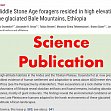
Wissenschaftlicher Artikel: In der Mittelsteinzeit lebten
in den vergletscherten Bale-Bergen, Äthiopien, in den Hochlagen von
Studien über die frühe menschliche Besiedlung in alpinen Umgebungen geben Aufschluss über das physiologische, genetische und kulturelle Anpassungspotenzial des Menschen. Obwohl die Anwesenheit des Menschen im späten und sogar mittleren Pleistozän auf dem tibetischen Plateau kürzlich dokumentiert wurde, ist wenig über die Art und den Kontext der frühen, dauerhaften menschlichen Besiedlung in hohen Lagen bekannt. Hier berichten wir über die frühesten Belege für eine prähistorische Wohnstätte in großer Höhe.
[ mehr ... ]

Sauna, Schweiß und Wissenschaft II - schwitzen wir, was wir trinken?
Angeregt durch eine frühere „Sauna, Schweiß und Wissenschaft“-Studie [Zech et al. Isot Environ Health Stud. 2015;51(3):439-447] und aus Neugier und Begeisterung für die Forschung zu stabilen Isotopen und der Sauna wollten wir die Frage beantworten: „Schwitzen wir (isotopisch), was wir trinken“?
[ mehr ... ]
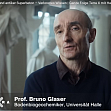
Verlorenes Wissen (1/2) - mit Harald Lesch
Prof. Harald Lesch begibt sich auf die Suche nach Wissen, das in Vergessenheit geraten ist. Er stößt auf Kenntnisse, die Probleme von heute lösen könnten.
Die Suche nach 8000 Jahre altem Superdünger führt das "Terra X"-Team ins Amazonasgebiet. Die Ureinwohner scheinen ein Rezept gehabt zu haben, um die unfruchtbare Erde in Amazonien fruchtbar zu machen. Noch heute wirkt die Terra Preta als langfristiger Superdünger. Fruchtbare Erde aus recycelten Abfällen – das könnte eine Lösung für die vielen Probleme der modernen Landwirtschaft sein.
[ mehr ... ]
Zum Seitenanfang
























